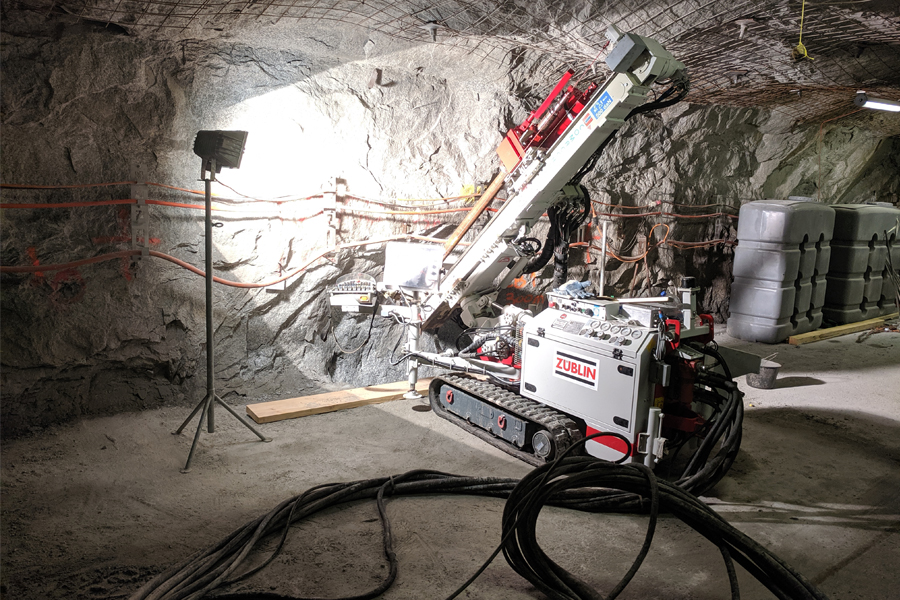Heat and power from underground

The drilling rig drives a borehole into the granite of the Gotthard massif.
Source: Swiss Seismological Service at ETH Zurich, 2019
At a glance
Using heat from the ground is nothing new. It is extracted with geothermal probes, transferred to heat pumps and used for heating and hot water. The deeper one penetrates into the earth, the higher the temperatures: while the rock is 40 °C one kilometre underground, it is already 160 °C 5 kilometres below the earth's surface. The petrothermal process is suitable for making this heat usable. In this process, water is forced into a borehole at high pressure. The pressure causes the water to spread out in the cracks in the rock and expand them. So-called reservoirs are created. Like a heat exchanger, the rock heats the water flowing through it. Through a second borehole, the water is transported back to the earth's surface, where it can be used for heating purposes, industrial processes or even for electricity production. The potential is enormous: the umbrella organisation Geoenergie Schweiz estimates that geothermal energy could provide 17 terawatt hours of energy annually by 2050, which corresponds to a quarter of the projected total heat demand.
As efficient as the petrothermal process is, it also has its dangers: in 2005, the "Deep heat mining Basel" project based on it had to be abandoned because it had led to several perceptible earthquakes. As a result, the process had to be adapted so that different zones in the rock could be controlled individually. Geo-Energie Suisse AG therefore developed the "Packer method". This is based on the multi-stage stimulation method used in the extraction of oil: the water is transported into the borehole through a pipe. Sliding elements in the pipes can be used to control where the water exits the pipe into the borehole. On top of the pipes are so-called packers (inflatable rubber sleeves), which tightly seal the spaces between the pipe and the rock - similar to balloons. This ensures that the water can only form reservoirs and circulate in individual sections of the rock. Thanks to measuring devices that even register tremors that are ten million times smaller than perceptible earthquakes, the researchers are also able to identify rock zones that could be severely shaken by a stimulation. This reduces the risk of earthquakes to a minimum. With the Packer method, each section of rock can be stimulated individually and with the exact strength needed to create a reservoir.
The procedure was successfully demonstrated in two campaigns (winter 2020 and spring 2021) at ETH Zurich's Bedretto rock laboratory. In the process, the most important criteria for success were met: The flow rates were, as predicted by numerical models, a factor of 3 to 6 higher than with single-stage stimulations. The energy output was correspondingly high. The seismic activity caused by the procedure was kept to a minimum and could be monitored in detail. Furthermore, the equipment proved to be suitable for multi-stage stimulation tasks from the oil and gas industry as well as for geothermal applications. In the Jura, on the other hand, wind conditions correlate with those in the rest of Europe. However, because this region has the highest average wind speeds in all of Switzerland, the wind farms there are already economically viable today.
Products from the project
Contact and team
Project Manager
Peter Meier
Geo-Energie Suisse AG
Reitergasse 11
CH-8004 Zürich
+41 61 500 07 20
p.meier@geo-energie.ch
Domenico Giardini
ETH Zürich
Sonneggstrasse 5
CH-8092 Zürich ETH-Zentrum
+41 44 633 26 10
domenico.giardini@erdw.ethz.ch

